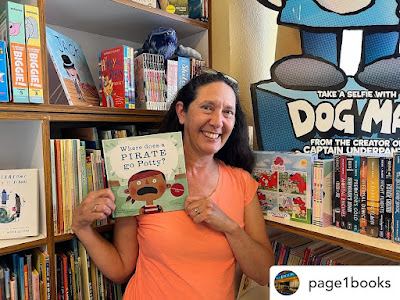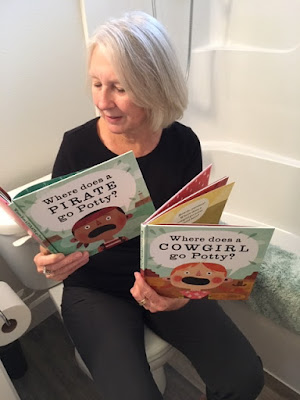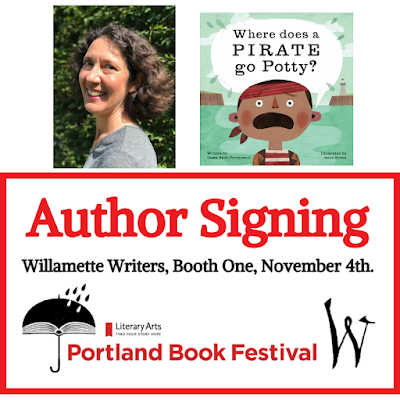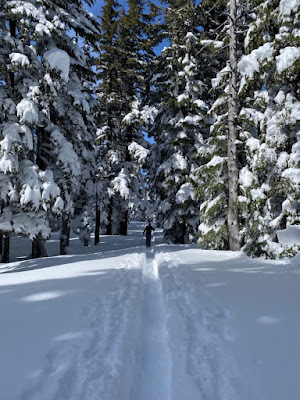Dear Readers, one of the best parts of being involved in the kidlit industry is making new friends. Today I have the pleasure of introducing you to Robin Hall and her debut picture book, THE LITTLEST WEAVER (illustrated by Stella Lim, Familius, October 2023).
I became familiar with Robin and her work because we are publishing-house siblings (I have a book with Familius coming out in 2025). Robin and I first chatted back in May for an IG Live feature that she hosts, and now I'm so glad to be able to interview her! Grab your favorite blanket, friends--bonus points if it's hand-woven--and settle in for an inspiring conversation with Robin.
Dawn Prochovnic: Welcome to the blog, Robin. I’m looking forward to learning more about the path to publication for your debut picture book, THE LITTLEST WEAVER.
This is a very tender and touching story. Would you be willing to share the inspiration for it with us, as well as the process and timeframe between your initial idea for this book and the story that was formulated fully enough to submit to an editor?
Robin Hall: Dawn, thank you for your kind words for The LITTLEST WEAVER. This story started from a need I had to finish a news story I heard back in 2011 after the devastation of the Tohoku Japan tsunami and earthquake. I learned of a father who tried to save his family but didn’t make it in time and saw them all be swept out to sea. I couldn’t stop aching for him, so I wrote a short story to give that sad man a happier ending with a bit of hope. Years later, perhaps 2016, I turned that short story into a picture book. It went through many different variations, complete rewrites, and then deep revisions before becoming the story it is now. I submitted it to my publisher, Familius, in 2018 and they gave me a revise and resubmit. It took me until 2020 to figure out those revisions and send it back. Thankfully, they still loved the story.
DP: Oh my goodness, Robin. What a meaningful way to process a difficult news story. And now you've brought something beautiful into the world as a result.
When you compare one of your earliest drafts of this story to the version in the published book, what stands out for you in terms of what is most different? Likewise, is there anything in particular that stands out that was included in your earliest drafts and survived the revision process?
RH: My original version was set on a whole different continent. One of the best and biggest revisions was to figure out how to make this story my story. I brought it to my home state of North Carolina, with our own hurricanes, and mountains, and strong weaving tradition.
Something that has stayed the same is the recognition that sometimes we need to let people be sad, to honor that, as part of the healing process. In the book, Laurel says, “Pa, he’s at the cloudy days part. He needs rain showers to get to the rainbow.”
DP: That exchange is such a compelling part of the story. And I love that you chose to set the story in a place that's familiar and meaningful to you. The authenticity really comes through.
When you compare your creative process for writing children’s books to your creative process as a weaver, what are some of the key similarities and differences?
RH: Whether I’m weaving cloth or weaving a story, they both need a structure. For textiles, we have vertical threads under tension that are called warp threads. This is the structure of the textile and sets the confines for me as a weaver. The weft threads are what is woven over and under, adding color and texture. I think of a story structure as the warp of my stories, while the weft is my setting, characters, time period, tone, etc.
 |
| Robin's loom with two shuttles on a twill pattern |
One thing that is definitely different is I never feel like my writing is done. With weaving, when I get to the end of my warp, the weaving is done, and so am I. It feels good to have projects that so clearly tell me they are done!
 |
Robin standing next to a loom
|
 |
| Robin holding a completed wool blanket |
DP: I'm so glad I asked this question! I LOVE your response. It's so vivid and instructive.
One of my favorite parts of being an author is connecting with young readers at school, library, and bookstore visits, and I’m always looking for new pro tips. Given your experience teaching a myriad of classes, hosting Instagram Live events and now as a visiting children’s book author, what professional advice or suggestions do you have for fellow author/presenters in terms of planning successful (in-person and/or remote) book events?
RH: I’m still pretty new to being a published author and slowly figuring that out myself. What seems to work is communicating my vision beforehand and leaning into what I know I can do well.
I also strongly believe in standing in a superhero pose, legs wide, chest proud, hands on my hips, and taking three deep breaths before presentations. Science shows it improves confidence, and it sure does for me. Plus, it helps me take myself a little less seriously and remember to have fun!
DP: Great, practical tips, Robin!
If you could go back in time, what would you tell your pre-published self? Or, said another way, what do you know now, that you wished you would have known a bit earlier?
RH: Be patient with the process. Focus on the things I can control (writing a good story) and let go of the rest as best you can.
I also wish I’d known that being author is a little bit like being a mother, we wear a lot of hats. Writer, editor, advocate, publicist, accountant, social media expert, photographer, videographer, and so much more.
DP: That is for sure!
Is there something you wish someone would ask you about your path to publication for THE LITTLEST WEAVER, that you haven’t had the opportunity to share yet?
RH: My book is releasing during National Spinning and Weaving Week, and it’s something I had no control over, and my publisher didn’t even know about until I told them. It feels just right to be born during this week.
 |
| Robin with a table loom holding one of her favorite weaving books |
DP: That is really amazing, Robin. The perfect week for this book to be born, indeed!
Do you have anything you’d like to tell us about what you’re currently working on?
RH: I’m working on multiple picture books and am also revising a historical fiction middle grade about a boy afraid of water who has to move to a lighthouse.
DP: I look forward to hearing more about these projects as they come to fruition!
Thanks so much for sharing your Birth Story for THE LITTLEST WEAVER with us, Robin!
Friends, you can support Robin's work by ordering a copy of her debut at all of the usual places including Bookshop , your local indie bookstore and/or your local library. You can also order directly from the publisher.
**********
Robin Hall holds an MFA in the Writing for Children and Young Adults from Vermont College of Fine Arts. Her debut picture book, THE LITTLEST WEAVER, will release Fall 2023. She teaches creative writing to children, yoga to all ages, and lives in North Carolina on a tiny farm with one husband, five children, four dogs, three looms, and too many chickens to count. Visit Robin at
www.robinhallwrites.com and on
instagram/
Twitter @robinhallwrites.
********
Birth Stories for Books is an occasional feature of Dawn Babb Prochovnic's blog. Dawn is the recipient of the 2023 Walt Morey Young Readers Literary Legacy Award and the author of multiple picture books including, Lucy's Blooms, Where Does a Cowgirl Go Potty?, Where Does a Pirate Go Potty?, and 16 books in the Story Time With Signs & Rhymes series. Dawn is a contributing author to the award-winning book, Oregon Reads Aloud, and a frequent presenter at schools, libraries, and educational conferences. Contact Dawn using the form at the left, or learn more at www.dawnprochovnic.com.



















































